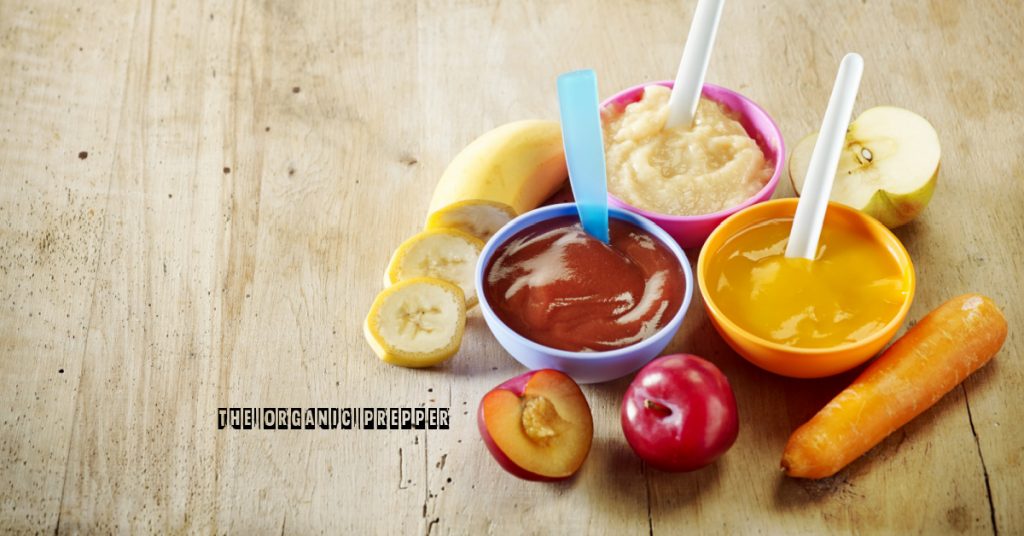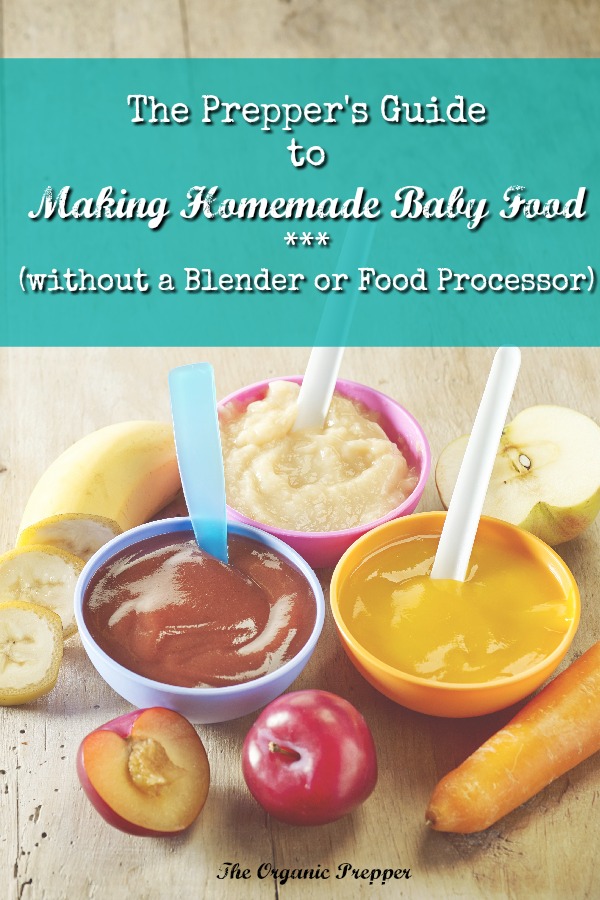If you're new here, you may want to subscribe to my RSS feed. Thanks for visiting!
By Daisy Luther
Making your own baby food is easy if you have a blender or food processor, but what if the power is out?
When my daughter recently had complications from oral surgery, letting her feast on nothing but ice cream for 10 days seemed pretty counter-productive to healing. While making her very soft diet for 10 days, the thought crossed my mind that post-collapse, people with dental issues and babies will still need to eat long after the jars of Gerber are gone. (And really, a lot of that jarred food is pricey and isn’t made from the best quality products, which means that making your own is a thrifty and healthful idea regardless of the circumstances.)
But, without our normal kitchen gadgets like stick blenders, food processors, and blenders, what’s the best method to make purees?
Here are the tools you need for homemade, off-grid baby food.
Making a puree without kitchen gadgets is only slightly more time-consuming. The only kitchen implements you need are probably things you already have on hand.
- A potato masher (for longevity, go with a sturdy metal one instead of a cheapo plastic one)
- A metal strainer (you want the criss-cross mesh and not the kind with perforated circles for best results.) You can get this kind with feet or this kind with a handle. Note how the one with the handle has the little hooks on the opposite side – this will make your life much easier.
- A large metal spoon
Like I said, you probably have all of these things – the links are for informational purposes so you can envision exactly what I’m talking about. Unless, of course, you have no spoons, strainers, and mashers. Then, by all means, pick them up.
Here’s how to prepare baby food without a food processor or blender.
I used this technique with grains (like pasta, oats, and rice), fruits, and vegetables with great success. You can add broth for a little bit of protein, or, instructions for preparing meat are below.
- Cook your ingredients until they are soft. You won’t be able to get the right texture with lightly steamed veggies. Generally, boiling will be the best way to cook the food.
- Use your mesh strainer to drain the cooked food, reserving the cooking liquid to add back in for the right consistency.
- Depending on the sturdiness of the food, you may need to use your potato masher to prepare the food for straining. Starchier foods like potatoes, carrots, and sweet potatoes, for example, will require mashing first. Once the food has been mashed, return it to the strainer.
- Place your strainer over another pot or a large bowl. Using your large metal cooking spoon, press the food through the mesh strainer. The pieces left in the strainer can be used for the adults by adding them to a soup or casserole.
- If the puree needs thinning, add some of the cooking liquid back in a tiny bit at a time, stirring constantly to achieve your desired consistency. For a very young infant, you’ll require a much thinner puree. As the child gets older and more able to chew, it can be a bit thicker.
For older babies who are able to eat a wider variety of foods, the family’s dinner can often be processed this way so that they can enjoy the same meal.
How to prepare meat for baby food.
Meat is more difficult to prepare without a food processor but can be done for older babies. If your child is just starting out with solids and you are unable to puree it in a food processor, you may need to delay introducing it for a little while and just add bone broth to their vegetable purees.
- A slow-cooked, tender meat will yield the best results.
- Once the meat is very tender, cut it into tiny pieces – and by tiny, I mean about the size of a grain of rice.
- Place it back into the pot and use your potato masher to tenderize it even more.
- Stir in some broth or add a vegetable/grain puree.
- Press this through a colander with bigger holes. Strain thoroughly to ensure the pieces are small enough that your baby won’t choke.
There’s also the option of this baby food-making gadget.
The methods above all use simple, easily accessible products that most people already have in their kitchens.
However, if you like gadgets and your kitchen is not overflowing with them, this potato ricer would easily strain the daylights out of some baby food, performing all of the tasks that your three kitchen tools above will.
Preserving baby food by canning
If you want to preserve some food during harvest time for baby to eat later, remember this one important thing:
You should NOT puree food before canning.
Whenever you puree a low acid food and can it, you run the risk of not reaching the appropriate internal temperature throughout the puree to keep the food safe from botulism. Botulism can be deadly for a healthy adult – it would be difficult for an infant to survive a bout of the disease.
If you are putting food back for baby, can the item as is normally directed. For example, potatoes or squash should be diced, green beans should be cut into jar sized pieces – you get the idea. Then, at serving time, use the steps above to process the jarred food for baby. You won’t need to boil it any further to reach the appropriate consistency – just start right in with the straining and the smashing.
To learn how to safely home can fruits, vegetables, and more, check out my book, The Prepper’s Canning Guide.

















4 Responses
Hi Daisy
Hope your daughter is feeling better. My jaw ached just reading your post. Brought back not so fond memories of having my wisdom teeth extracted. Remember pureeing a bar-b-qued steak a couple of days after the procedure. I didn’t find commercially prepared baby food tasty.
I made almost all of my babies’ pureed food. They both hated homemade peach and apricot purees but loved everything else. I used a 1970’s blender and had no problem getting a smooth texture with all other foods.
Rather than using a ricer, I’d go with a food mill which would be easier on the hands. Something that needs to be considered if arthritis rears it’s ugly head. My food mill comes with different screens depending on how fine I need to puree my food.
As a long time kitchen gadget junkie, (who owns a chestnut cutter) I dream of owning a manually operated blender. One day, when I win the lottery, I WILL get one.
A food mill is helpful making baby food, too. My son didn’t eat prepared food until he was 2 years old thanks to a food mill & a food processor.
Hope your “little” girl is feeling better.
Good luck and fast healing.
At the risk of stating the obvious ,the human saliva glands will partially digest food ,this is a throw back to when we had to chew food for a long time before giving it to our babies.A final solution if you really have nothing else.
As an aside we make our own dog food as we know what goes into commercial dog food.
Our dogs dine on Chicken,Bacon,Mixed vegatables and rice .
The neighbour next door is not happy watching our dogs feed……”Your bloody dogs are better fed than I am!!!”